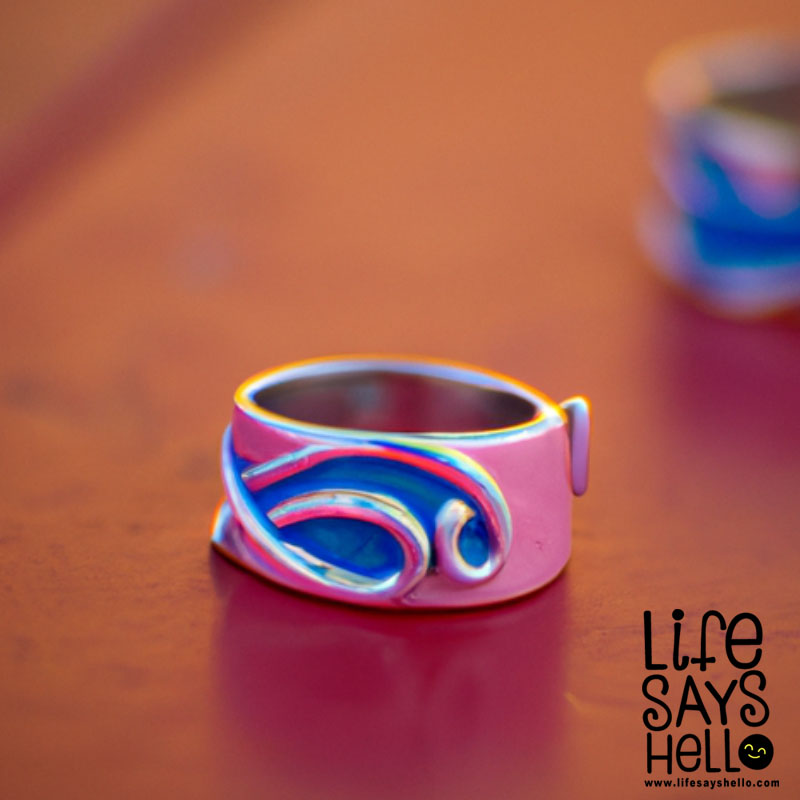Why Don't Guys Wear Engagement Rings? A Deep Dive into the History, Social Norms, and the Future of Men's Engagement Traditions

Have you ever wondered why men don't typically wear engagement rings, despite it being a common tradition for women? Join us as we explore the fascinating history, social norms, and the growing trend of men's engagement rings in this comprehensive guide.
The concept of engagement rings has been around for centuries, symbolizing love, commitment, and the promise of marriage. While women have long been the recipients of these cherished tokens, men have largely been left out of the tradition. But why don't guys wear engagement rings? To understand this, we need to delve into the history, gender roles, and evolving social norms surrounding this age-old custom. So, sit back, relax, and let's take a fascinating journey through the world of engagement rings and their significance for both men and women.
The History of Engagement Rings
Ancient Origins
The tradition of engagement rings can be traced back to ancient civilizations, such as Ancient Rome and Egypt. In these cultures, rings were often made from simple materials like bone, ivory, or metal and were exchanged between couples as a symbol of their intention to marry.
In Ancient Rome, the custom of giving a ring to one's betrothed was common, with the ring typically worn on the third finger of the left hand. This was believed to be because of the "vena amoris" or "vein of love," which was thought to run directly from the heart to this finger. However, these rings were generally only given to women, setting the stage for the gender-specific tradition that has persisted through the ages.
The Middle Ages and Beyond
As we move forward in history, engagement rings became more elaborate and valuable. During the Middle Ages, rings adorned with precious stones and intricate designs became popular among the nobility. The first known diamond engagement ring was commissioned by Archduke Maximilian of Austria for his betrothed, Mary of Burgundy, in 1477. This act sparked a trend among European aristocracy, further solidifying the engagement ring as a symbol of wealth and status.
Despite these developments, the tradition of men not wearing engagement rings remained firmly in place. This was likely due to a combination of factors, including the high cost of precious metals and stones, as well as the societal expectations placed upon men and women in relationships.
Gender Roles and Social Norms
Traditional Gender Roles in Relationships
To fully understand why men don't wear engagement rings, it's essential to examine the traditional gender roles that have shaped relationships and marriage throughout history. Men have often been seen as the providers and protectors in relationships, while women were expected to be nurturing, supportive partners. These roles were reinforced through various societal institutions, such as laws, religion, and cultural norms.
As a result, it was generally expected that men would take the initiative in proposing marriage and providing a ring as a symbol of their commitment and ability to care for their future wife. Women, on the other hand, were expected to graciously accept this token and wear it as a sign of their loyalty and devotion to their future husband.
Societal Expectations and Pressures
In addition to traditional gender roles, societal expectations and pressures have also played a significant role in the continuation of men not wearing engagement rings. For many, the idea of a man wearing an engagement ring may seem strange, or even emasculating, due to long-standing cultural norms that associate jewelry with femininity.
Furthermore, the act of proposing and presenting a ring has become a rite of passage for many men, with societal pressure to "get it right" and choose the perfect ring for their partner. This can create a sense of anxiety and stress for some, further reinforcing the idea that engagement rings are solely for women.
The Emergence of Men's Engagement Rings
A Growing Trend
Despite the historical and societal factors that have contributed to men not wearing engagement rings, there has been a noticeable shift in recent years. As gender roles and expectations continue to evolve, more and more men are embracing the idea of wearing an engagement ring themselves.
This growing trend can be attributed to a variety of factors, including increased gender equality, a desire for greater symbolism and unity in relationships, and the influence of high-profile celebrities and influencers who have chosen to wear men's engagement rings.
Popular Men's Engagement Ring Styles
As the demand for men's engagement rings has grown, so too has the variety of styles available. From simple bands to more elaborate designs featuring diamonds or other precious stones, there is now a wealth of options for men who wish to embrace this tradition.
Some popular men's engagement ring styles include:
- Classic bands: Simple, timeless designs made from metals like gold, platinum, or tungsten.
- Diamond bands: Bands featuring a row of small diamonds or a single, larger stone for added sparkle.
- Mixed metals: Rings that combine two or more different metals, such as gold and platinum, for a unique, modern look.
- Textured bands: Rings with distinctive textures or patterns, such as hammered or brushed finishes.
- Gemstone accents: Bands featuring colored gemstones, like sapphires or rubies, for a pop of color and personalization.
The Benefits of Men Wearing Engagement Rings
There are several benefits associated with men wearing engagement rings, including:
Equality in Relationships
By choosing to wear an engagement ring, men can demonstrate their commitment to gender equality and challenge traditional gender roles in relationships. This can help to create a more balanced partnership, where both individuals feel valued and respected.
Breaking Gender Stereotypes
Wearing an engagement ring can also help to break down gender stereotypes and challenge societal expectations surrounding masculinity and femininity. This can encourage greater acceptance and understanding of diverse expressions of gender and identity.
Strengthening the Bond Between Partners
For many couples, the act of both partners wearing engagement rings can serve as a powerful symbol of their love and commitment to one another. This can help to strengthen the bond between partners and create a greater sense of unity and togetherness.
Conclusion
The tradition of men not wearing engagement rings has deep historical roots and has been shaped by various social norms and gender roles. However, as society continues to evolve and challenge these conventions, we are seeing a growing trend of men embracing engagement rings as a symbol of love, commitment, and equality.
As we move forward, it's essential to keep an open mind and embrace change in our relationship traditions. After all, love and commitment should be celebrated and expressed by all, regardless of gender. So, whether you're a man considering wearing an engagement ring or simply curious about the topic, we hope this comprehensive guide has provided valuable insights and inspiration.




Comments